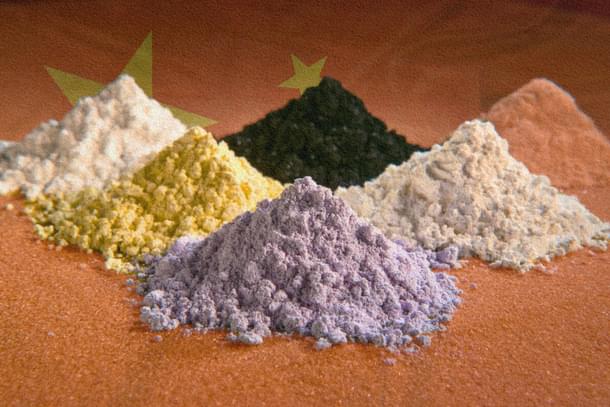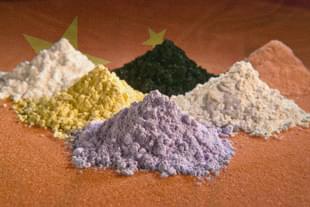News Brief
As China Strengthens Control Over Rare Earths, Global Players Including India Race To Secure Supplies
Swarajya Staff
Jul 11, 2025, 11:09 AM | Updated 11:09 AM IST
Save & read from anywhere!
Bookmark stories for easy access on any device or the Swarajya app.


China, which already controls the bulk of the world’s rare earth processing and dominates global lithium refining, is continuing to expand its hold over critical minerals.
In the first half of 2025, it discovered 38 new mineral deposits — a 31 per cent increase over last year — including major reserves of lithium, rubidium, and gold.
This expansion comes even as other countries, including India, are trying to reduce dependence on Chinese supplies.
But with over 90 per cent of rare earth refining and 16.5 per cent of global lithium reserves already under its control, China’s latest discoveries deepen a structural gap that others are still scrambling to close.
One of the largest new finds is in Hunan’s Jijiaoshan mining zone, where authorities reported 490 million tonnes of lithium ore and 1.31 million tonnes of lithium oxide.
The site also contains medium-to-large reserves of rubidium, tungsten, tin, niobium, and tantalum.
In January, another spodumene-type lithium belt — stretching 2,800 km across western China’s Kunlun Mountains — was reported to hold verified resources of 6.5 million tonnes, with potential reserves exceeding 30 million tonnes.
“[We] will improve basic geological work and advance strategic prospecting to further strengthen … national energy and mineral resource security,” said Niu Li, deputy director of the Chinese Natural Resources Ministry’s geological exploration department, SCMP reported.
China’s Ministry of Natural Resources said the country’s mineral exploration investments rose by more than 50 per cent year-on-year in the first half of 2025.
Non-hydrocarbon mineral exploration alone reached 6.69 billion yuan (~Rs 8,000 crore), focusing on tin, bauxite, tungsten, copper, and phosphate — all of which are central to green energy, aerospace, and semiconductor industries.
The current push builds on a long-term state strategy. Since 2011, China has pursued centralised mineral exploration and equipment modernisation, and by its own admission, has already met most of its 2021–2025 five-year targets ahead of schedule.
This Chinese domestic expansion coincides with tighter export controls on rare earth elements and rare-earth magnets as geopolitical leverage.
In April 2025, Beijing imposed tighter export controls on rare earth magnets — critical components for electric vehicles, wind turbines, and electronics. The move resulted in a sharp drop in global shipments and rising uncertainty across supply chains.
Export approvals became slow and selective, forcing manufacturers across sectors to wait weeks for shipments or rework sourcing entirely.
India’s electric vehicle and auto parts industry was also among those hits by Chinese export curbs, with automakers reporting delays in sourcing magnets and electric motor component.
In response, a global counter-effort, including in India, is underway to diversify sourcing.
India is reportedly working on a plan to expand rare earth output.
Australia-listed St George Mining began work at its Brazil-based Araxá rare earth project.
In Kazakhstan, two US firms - Kaz Resources and Cove Kaz Capital - partnered with the national geological company to begin metallurgical testing at a key rare earth site.
Critical Metals Corp, a Nasdaq-listed firm, secured up to US$120 million in funding from the US Export-Import Bank for a Greenland project.
In May, Australia-listed Lynas Rare Earth said it was producing dysprosium oxide in Malaysia, making it “the only commercial producer of separated heavy rare earth products outside China”.
Despite these developments, several challenges remain. China retains cost advantages in refining, controls key patents and IP, and has built deep industrial talent pipelines.
Analysts note that it could take 10 to 20 years and hundreds of billions in investment for countries to match China’s processing scale.
A recent assessment by Australian firm Earth Rarest estimated that Australia could supply up to 20 per cent of global demand for neodymium and praseodymium, but warned that a full replacement of Chinese supply across all 17 rare earth elements remains unlikely in the near term.
For India, the challenge is not resource availability but industrial readiness.
While the country produces around 2,900 tonnes of light rare earths annually, it imports over 50,000 tonnes of rare earth magnets, most of them processed in China.
India holds substantial monazite reserves and has state-run exploration programmes, but lacks commercial-scale refining, advanced separation technologies, and downstream value chains.
In response, the Modi government is reportedly planning to invest between Rs 3,500 crore and Rs 5,000 crore to provide incentives to companies to set up rare earth processing and magnet production facilities to meet local demand.





